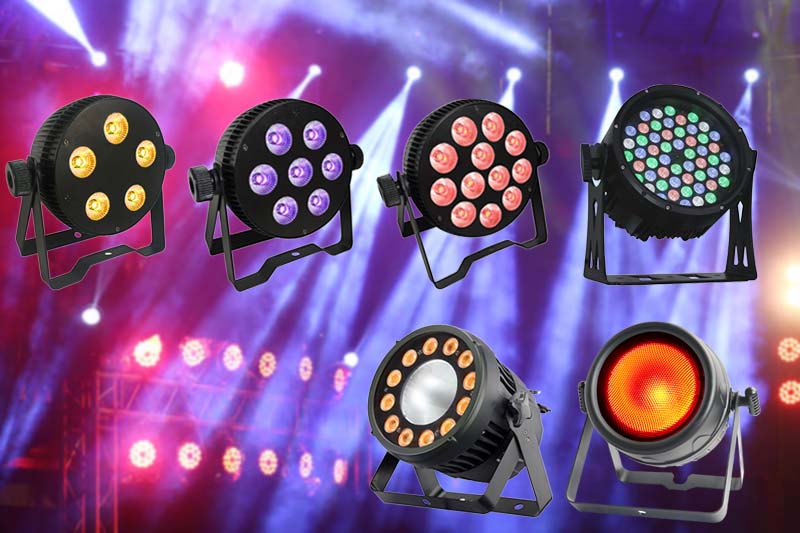Par can lights, also known as Par cans or Par lights, are versatile lighting fixtures commonly used in various settings, including theaters, concerts, clubs, and events. These lights have become a staple in the entertainment industry due to their flexibility, functionality, and ability to create dynamic lighting effects. But what exactly are par can lights used for?
Par can lights are primarily used for illuminating stages and creating vibrant lighting designs. They consist of a metal housing, a lamp socket, and a reflector, which together form a powerful lighting unit. The size of a Par can light can vary, with common sizes being Par 38 and Par 64, referring to the diameter of the lamp in eighths of an inch.
One of the main uses of par can lights is to highlight performers on stage. The wide beam of light emitted by these fixtures allows for even coverage of the stage, ensuring that every performer can be clearly seen by the audience. The adjustable focus of par can lights allows lighting designers to control the beam angle and direction, enabling them to create dramatic effects and bring attention to specific areas or individuals.
Moreover, par can lights are often used in film and television productions to achieve various lighting effects. Their versatility allows for precise control over the intensity and direction of light, making them ideal for creating different moods and atmospheres on set. Whether it’s simulating daylight or creating dramatic shadows, Par can lights are a popular choice among cinematographers and set designers.
Par can lights are also frequently used for color washes. By using colored gels or filters, lighting designers can easily change the color of the light emitted by these fixtures, adding depth and ambiance to the stage or set. This ability to create a wide range of colors and hues is particularly useful for creating different moods and atmospheres during performances, events, or film productions.
Another application of par can lights is to create dynamic and moving patterns. By utilizing accessories such as gobos, which are stencils placed in front of the light beam, lighting designers can project intricate patterns, logos, or images onto the stage or other surfaces. This adds visual interest and enhances the overall design of the performance or event, creating a visually captivating experience for the audience.
Furthermore, par can lights are commonly used to create backlighting effects. Placing these lights behind performers or objects can create silhouettes, adding depth and dimension to the stage or set. Backlighting can be used to create dramatic effects, convey emotions, or simply enhance the overall visual impact of the performance or production.
Additionally, par can lights are often employed for architectural lighting purposes. From highlighting architectural features to illuminating outdoor spaces, these fixtures can be utilized to enhance the aesthetics of buildings and landscapes. Their durable construction and weather-resistant capabilities make them suitable for outdoor installations, allowing for impactful lighting displays in gardens, facades, and other architectural elements.
Moreover, par can lights have found their way into the world of photography. Their ability to create dynamic lighting effects and their flexibility in color control make them valuable tools for photographers looking to experiment with different lighting techniques, both in the studio and on location. From capturing portraits with dramatic lighting to creating vibrant and colorful scenes, Par can lights offer photographers a wide range of creative possibilities.
In conclusion, par can lights are versatile and essential tools in the entertainment industry. They are used for illuminating stages, highlighting performers, creating color washes, projecting patterns, providing backlighting, enhancing architectural spaces, and even in the fields of film, television, and photography. With their flexibility and ability to create stunning lighting effects, par can lights continue to be an integral part of the visual experience in various settings, allowing for captivating and immersive productions and events.
Post time: Aug-16-2023

